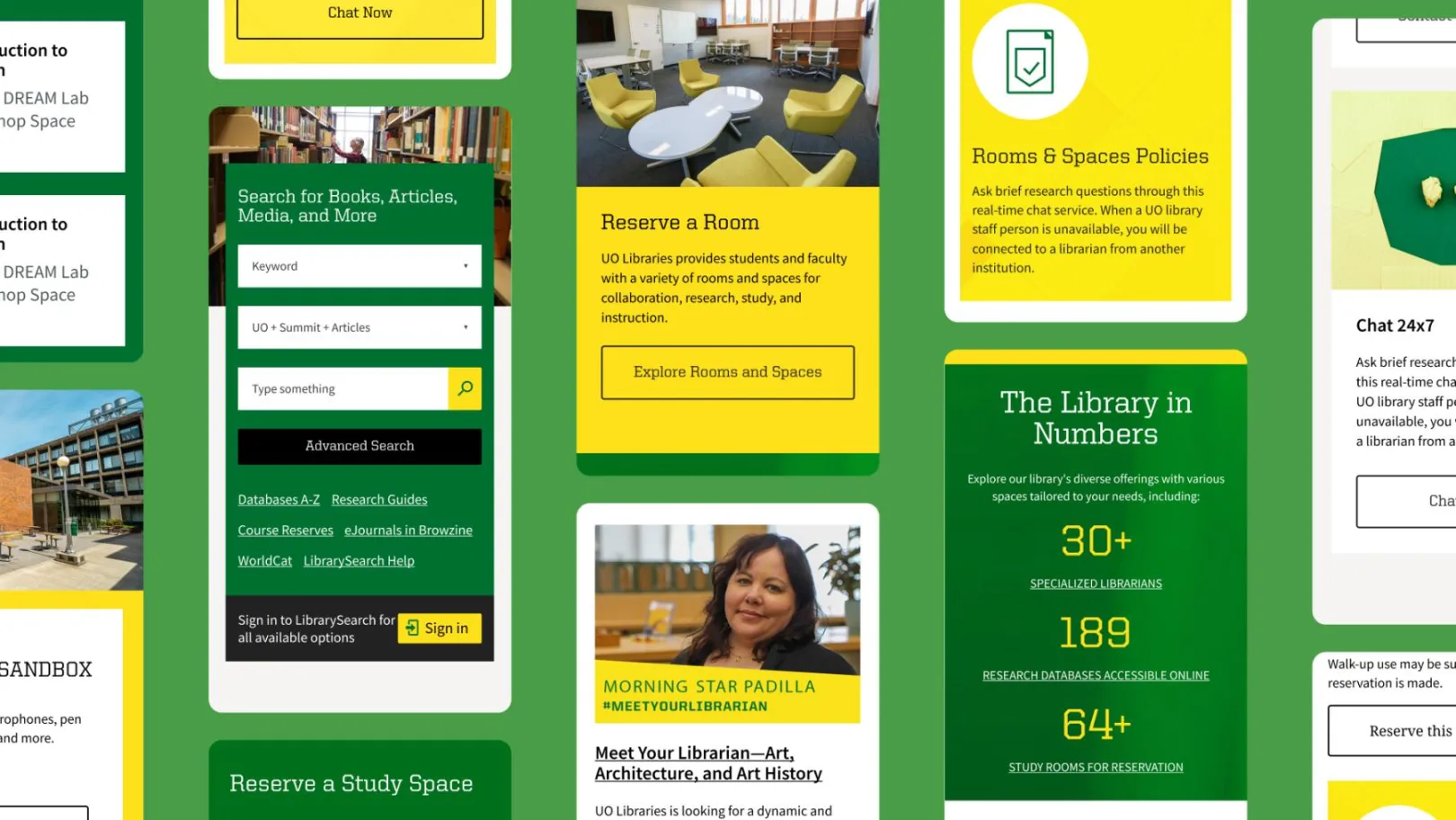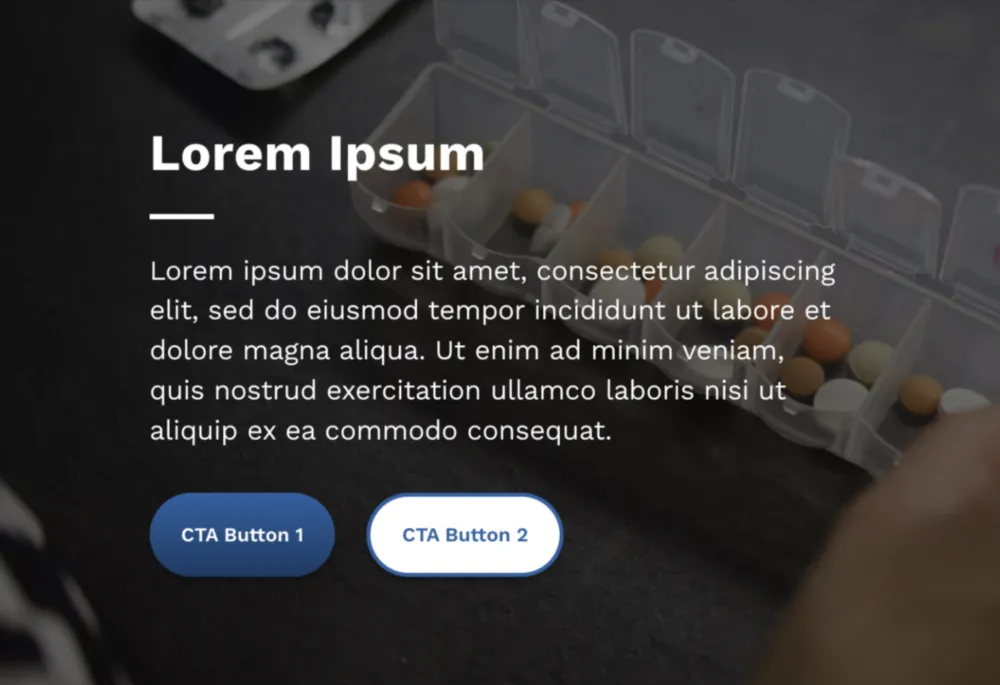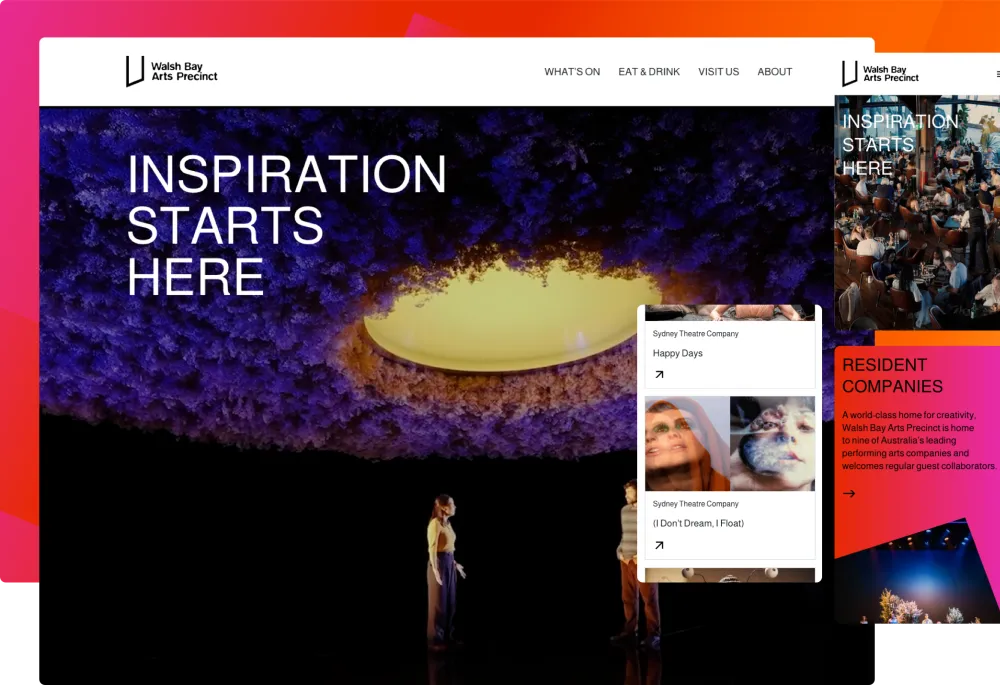The University of Oregon Libraries uses Drupal to prioritize the ease-of-use and accessibility of their digital front door. The Libraries website aligns with the university’s brand standards and gives students, faculty, and researchers direct access to essential resources. It integrates events and opening hours data from a central hub, reducing the time staff have to spend updating the website. Content editing is streamlined with a flexible, component-based “Marketing page” content type, enhanced WYSIWYG editor tools, and robust Media Library. Drupal’s modular architecture is scalable, user-friendly, and easy to maintain—ensuring a positive experience for Library staff and visitors.
Goals
This project's scope focused on design and architectural improvements, to enhance the navigation, accessibility, and overall user experience while limiting the impact on the underlying functionality and day-to-day operation of the website. Evolving Web wanted to avoid a migration project, or changes that would disrupt how content is produced on the website at a large scale.
To succeed, the redesign had to integrate the University-wide theme, to bring the website inline with brand and visual identity standards. The client also wanted to address pain points around in-page navigation, search, and information overload.

Challenges
One of the biggest challenges of this project is balancing the unique needs of the Libraries’ website with the desire for greater standardization on the UO modules and themes. We didn’t want to include so many design overrides that the website would be difficult to maintain.
-
Dependency on UO modules for styles: The existing library uses a sub-theme of UO’s Cosmic theme. In order to preserve branding and UO Edit Suite compatibility, the new theme was also going to be a sub-theme. This had the potential to complicate development due to dependencies that could affect the customization and implementation of the new design.
-
Impact of theme and module updates: Future updates to the base theme or modules contributing styles may conflict with the intended design, potentially affecting the final implementation and requiring additional development work.
-
Style overriding: Overriding existing styles may present complexities, which can lead to development challenges and hinder the integration of the new design elements.
-
Embedded HTML content: Certain pages containing embedded HTML content pose difficulties in styling, which may result in inconsistencies or limitations in aligning these elements with the overall design scheme.
-
Embed elements and libraries: The inability to control the styling of some embed elements and libraries introduces a risk of inconsistencies or visual disparities, potentially impacting the overall coherence and uniformity of the redesigned interface.

Solutions
Evolving Web addressed the navigation pain points by reworking the information architecture of the website. Our user research included card sorting to assess the existing content inventory from various points of view. We were able to establish connections between content groups that helped us rearrange content more cohesively. Finally, we used tree testing to validate our decisions.
Our work included:
-
Bringing the design in line with UO visual design standards
-
Integration of the UO “Marketing page” including the UO Edit Suite content type and 10 new components that content editors could leverage to create engaging content
-
Compliance with accessibility standards and WCAG 2.2 AA
-
Cleaning up of legacy content types to make the website easier to manage
-
Improving media management, achieved by converting existing images to Drupal’s Media Library and improving image cropping capabilities
-
Streamlining of the Open Hours so that these are always up-to-date and users can see at a glance when the Libraries are open
-
Updating to the WYSIWYG editor experience, so that components added through the editor would comply with brand standards
-
Customizing the components for the Room Bookings feature and announcement blocks
-
Developing the Events and Calendar functionality with the migration of events content from LibCal
-
Implementing the new UO theme
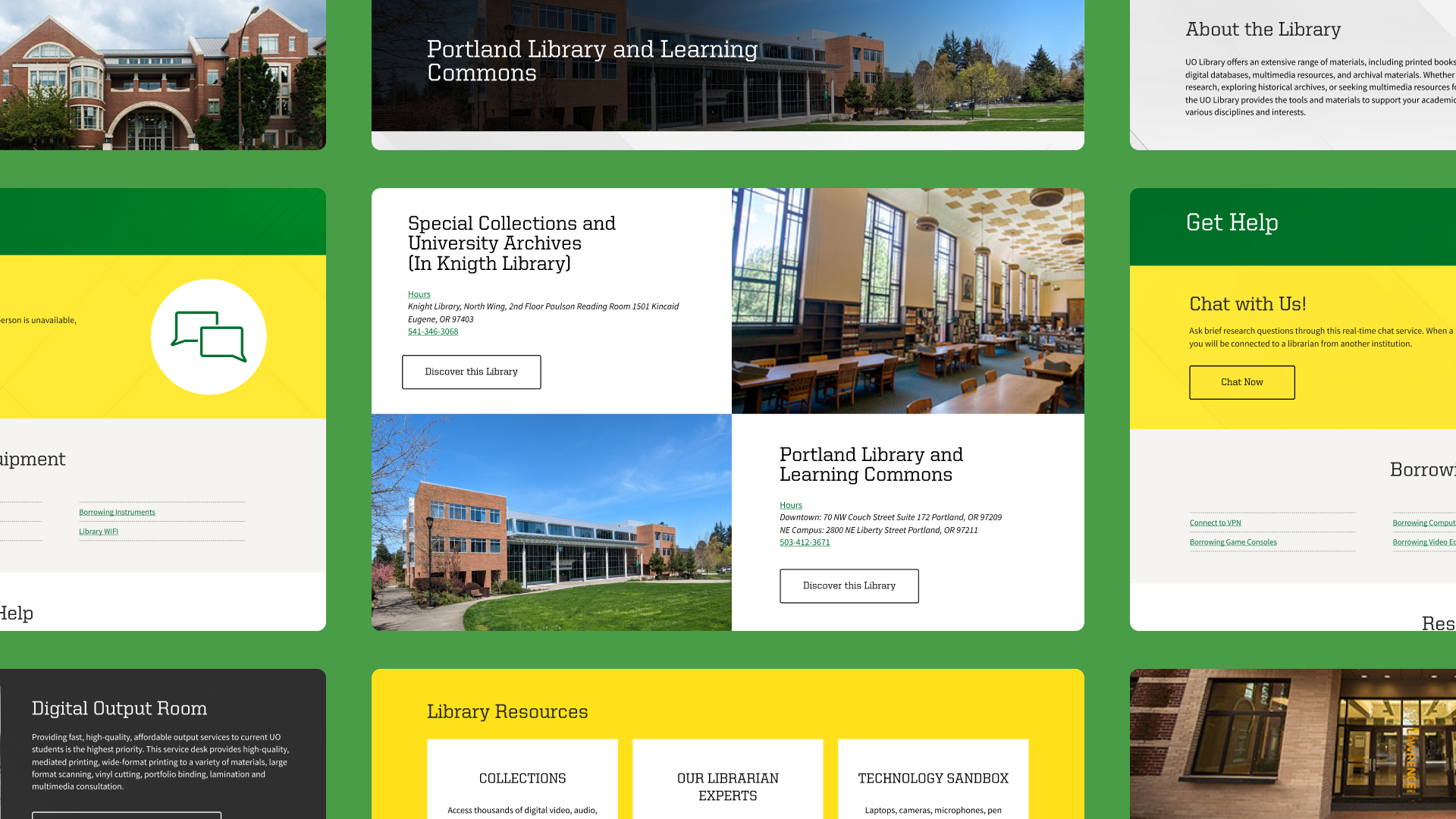
Results
The redesigned University of Oregon Libraries website delivers a cohesive, user-friendly experience that aligns with the university’s brand standards with improved navigation and usability. By reworking the information architecture, we made it easier for students, faculty, and researchers to find essential resources. The introduction of a new content type and reusable components empowers content editors to create dynamic pages while maintaining consistency. Updates to the media management tools, including the transition to Drupal’s Media Library, ensure better content control and brand compliance. Additionally, the streamlined Open Hours feature keeps information accurate in real time.
Enhancements provide a more structured way to showcase library events, boosting engagement. We built a scalable, maintainable framework that integrates seamlessly with the university’s existing modules. Customization of key features ensures that critical functionalities remain accessible and easy to manage. This redesign successfully modernized the Libraries’ digital presence while preserving core functionalities, creating a seamless experience for both users and content managers.

Drupal’s flexibility, scalability, and robust content management capabilities make it the perfect CMS for the University of Oregon Libraries. As the platform of choice for the University of Oregon, Drupal is the natural fit for the Libraries website, that serves current students and faculty, and the larger community. The website seamlessly integrates with the university’s Drupal ecosystem while enabling custom features tailored to their unique needs.
Key Drupal benefits leveraged in this project:
-
Easy integration with centralized data hub - Automated daily migration of event content from LibCal into the new Event content type
-
Modular architecture for customization – Integration of the UO “Marketing page” content type and 10 new components, empowering content editors to create engaging, on-brand content.
-
Improved content governance – Transition to Drupal’s Media Library for better media management, image cropping, and compliance with brand standards.
-
Enhanced user experience & navigation – Streamlined menu structure and in-page navigation refinements using Drupal’s flexible taxonomy and content structuring tools.
-
Accessibility & compliance – Implementation of WCAG 2.2 AA standards within Drupal’s WYSIWYG editor and frontend components.
With Drupal, the UO Libraries website is easy to manage, future-proof for long-term maintainability, and aligns with the University of Oregon’s evolving digital ecosystem.
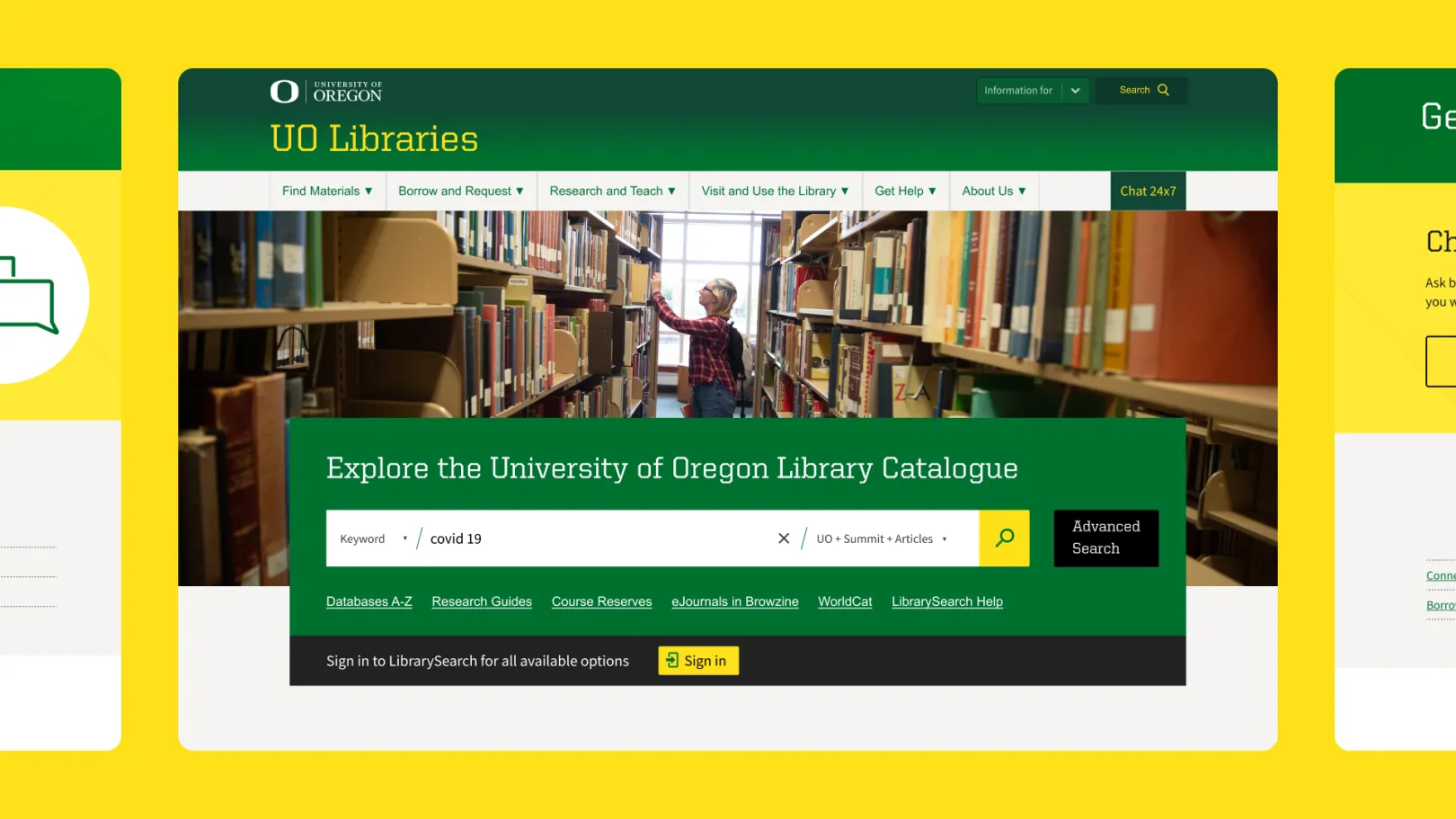
Technical Specifications
Drupal version:
Key modules/theme/distribution used:
